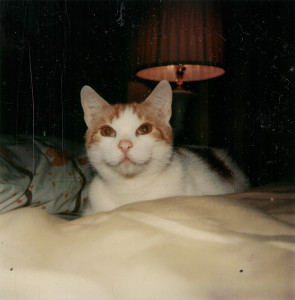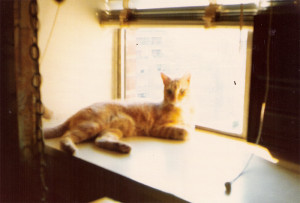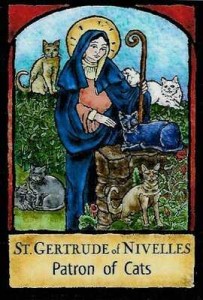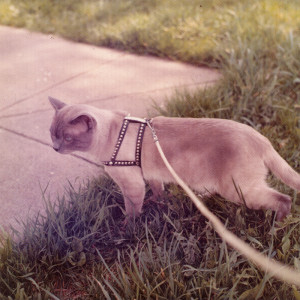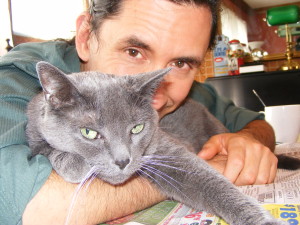For a one-sentence statement of my personal philosophy, the Serenity Prayer can’t be beat: “God, grant me the serenity to accept the things I cannot change, the courage to change the things I can, and the wisdom to know the difference.” (Closely followed by Kenny Rogers’s “The Gambler” chorus: “You got to know when to hold ’em, Know when to fold ’em, Know when to walk away, Know when to run…”)
The Aristotelian golden mean suggested by these maxims seems dynamic enough to outsmart the duplicities and imbalances of human nature, whereas simplistic idealizations of a single principle can slow down survival responses when conditions change. When our earliest relationships don’t build a foundation of trust, for instance, our unconscious defenses can get locked on the “hold ’em” (love-addicted) or “fold ’em” (love-avoidant) setting. I was a holder so long with my abusive mother that I have to curb my enthusiasm for folding now. A personal mantra like the quotes above can remind us to question whether our instinctual response really applies to the present problem. Can I change this situation, should I accept it, or should I leave? What wisdom have I learned from the way I made these decisions in the past?
This process of nonjudgmental present-time inquiry is known as mindfulness. In the Buddhist meditation tradition from which it came, there is no pressure to feel happier, nor any bias against change (as there often is in Western religions). Unfortunately, as mindfulness has been lifted from its spiritual context and taken up by America’s “pull yourself up by your bootstraps” popular culture, its lingo can be used to gaslight people into a positive attitude about unacceptable circumstances. One of my friends, a trauma survivor and Buddhist meditator, calls this the “spiritual bypass”: when religion tries to convince you that you need an attitude adjustment instead of a revolution.
The online news and culture journal The Conversation said as much in this provocative article last month, “How corporations co-opted the art of mindfulness to make us bear the unbearable”:
While there can be little doubt that the practice of mindfulness can lead to significant health benefits, its current prominence in corporate culture is nested within a social, cultural and political context where stress is now seen as a failure of the individual to adapt to the productivity demands of the corporation. In other words, if you’re stressed out, you’re not working hard enough on your personal focus strategy. You’re letting the team down.
The current translations of ancient mindful practices are also highly gendered. In a culture where women are much more likely to be encouraged to apply acceptance, silence, stillness and the relinquishing of resistance to their problems, the trap of mindfulness can be set to stun for those who may be much more in need of speaking up, resisting and taking space in the workplace.
In this context, mindfulness is an ideal tool to induce compliance, with its focus on the individual management of our responses to forces we’re being told are well beyond our control.
And this is perhaps the crux of the problem of the mindless application of Buddhist meditation practice: the marketing of mindfulness as a solution to work stress and life balance rather than the complex spiritual approach to living it is meant to be.
Suspicion of people’s agendas, however well-founded sometimes, has sadly interfered with my spiritual openness. (That “fold ’em” personality at work!) I would like to stop worrying that letting go, being mindful of my inner state, handing over control to my Higher Power, etc., will leave me vulnerable to spiritual attack, or will serve the interests of people who want to shut me up. I’m sort of like a cult survivor in that way. The warning system that “someone wants to take over my brain!” is really ingrained. My emotional cell membrane is too permeable. This is reason number six hundred that I’m taking a break from close involvement in organized religion. Until I develop better discernment and psychic defenses, I’m safer being by myself (or with a trusted friend or counselor) in those moments when I descend to a deeper level of communion with God and my subconscious.
That leads me to today’s next link, “Screen Backlash is a Disability Issue”, by Sara Luterman for NOS Magazine. The autistic writer pushes back against those thinkpieces criticizing modern people for using smartphones in lieu of face-to-face conversation. Community doesn’t have to look the same for everyone:
People who were previously isolated because of mobility or speech issues can find friends with shared experiences and interests. They get to be less alone.
People who oppose the use of screens aren’t trying to silence disabled people. The problem is that they aren’t thinking about us at all. When confronted with what smartphones can do for disabled people, anti-screen folks will claim that they are not talking about us. The thing is, when they look at a café and see people using their phones, there is no way to distinguish between the people who use phones as disability aids and people who just happen to find speaking through social media a perfectly adequate or even preferable mode of communication. A false hierarchy is formed, and of course, the ways some disabled people speak is at the bottom of it.
By idealizing inflexible, narrow definitions of communication, we are dehumanizing the people who don’t make eye contact, the people who don’t speak. Social media just gives us more socially acceptable and normalized options for communication.
This resonated with me because I encounter many such thinkpieces in Christian media. Anxious about falling church attendance, these bloggers and pastors disparage online spiritual friendships as shallow and dominated by groupthink. But for folks who can’t find an affirming or accessible church, or who are in a contemplative phase of their spiritual life, social media is an essential third way between isolation and forcing yourself to be somewhere you don’t belong. The feminist and queer Christian Twitterverse is also a place for radical theological re-thinkings that may make the difference between hold ’em and fold ’em in some wavering believers’ lives. (Shout out to Dianna Anderson, Sarah Moon, Samantha Field–if you can stay Christian, maybe I can too.)
Speaking of Samantha Field, go read her new blog post, “The Not-So-Ridiculous Reasons People Leave Church”. She asked her Twitter followers “if you used to attend church regularly, but don’t attend anymore, why did you stop?” Many people weighed in with good reasons including homophobia, churches that protected abusers, stumping for political candidates and ballot measures from the pulpit, no charitable service to the community, and lack of accommodation for disabilities, especially less-visible ones like autism. So please, no more invalidating memes about “stupid reasons for leaving church”. Let’s listen to each other and create better spiritual communities, online and off.
